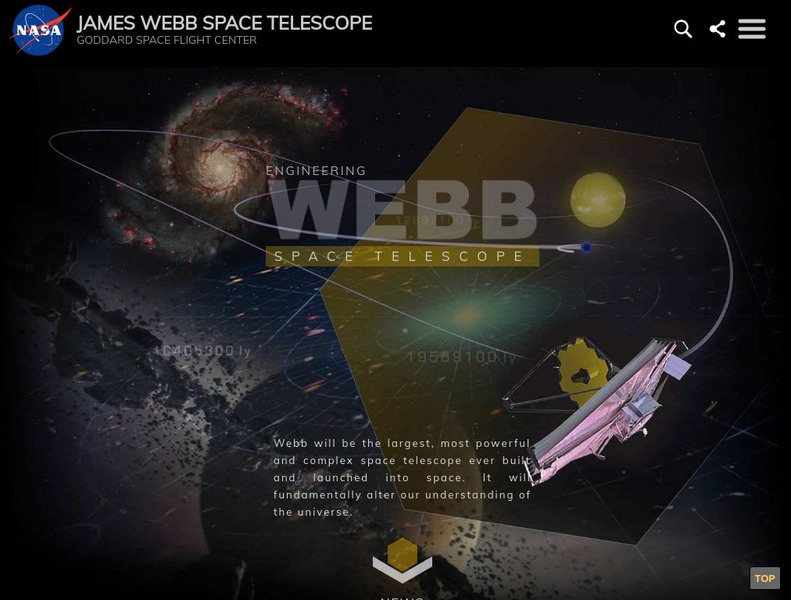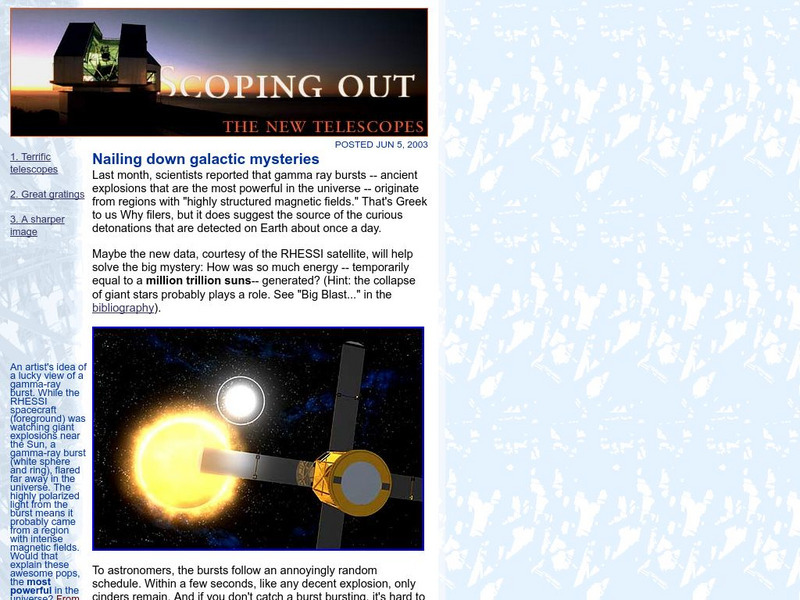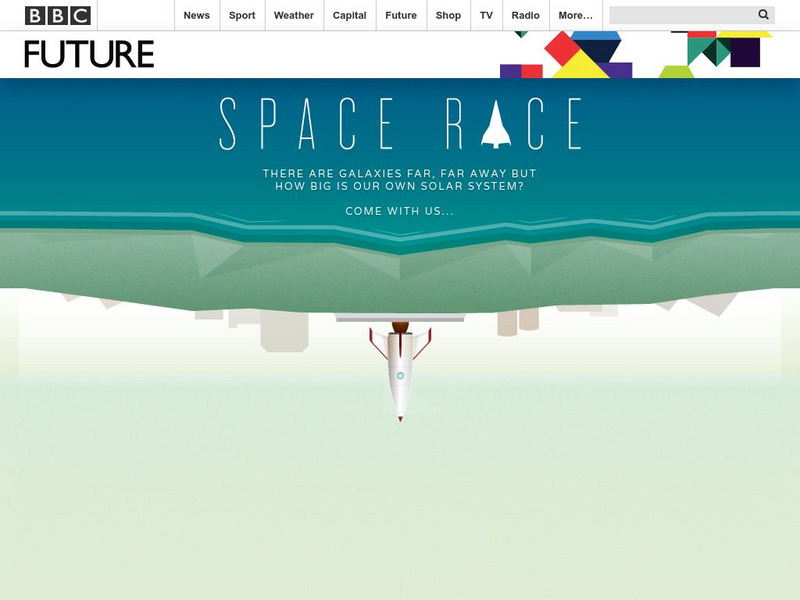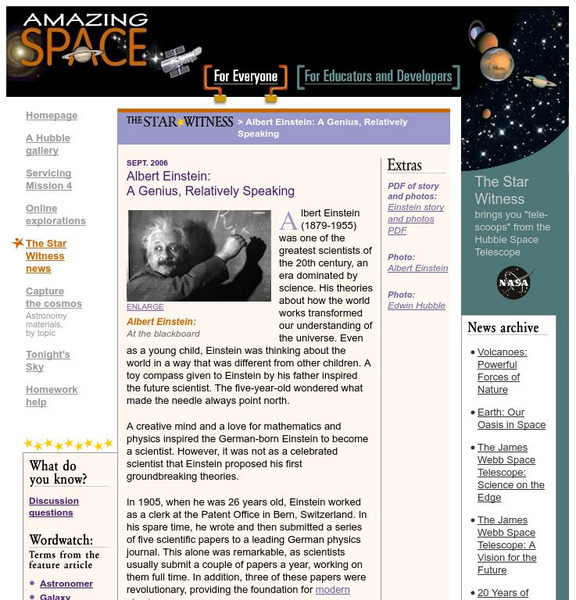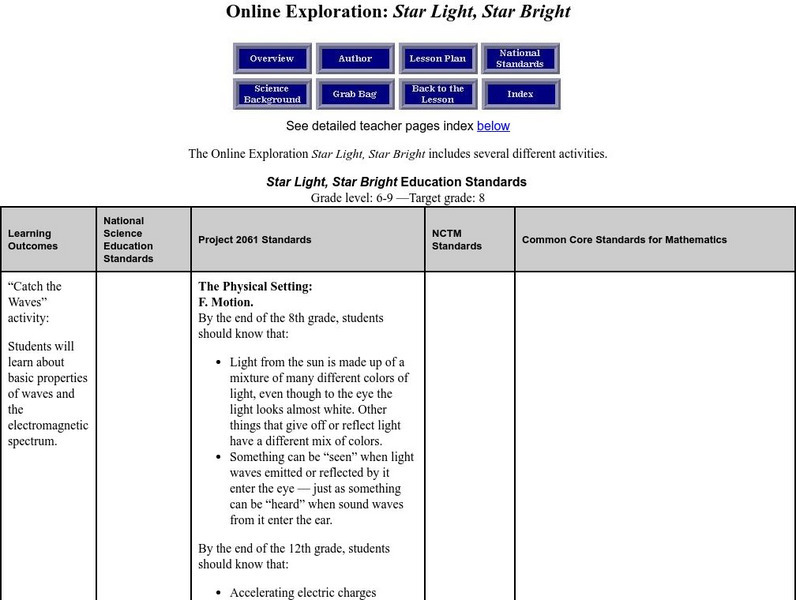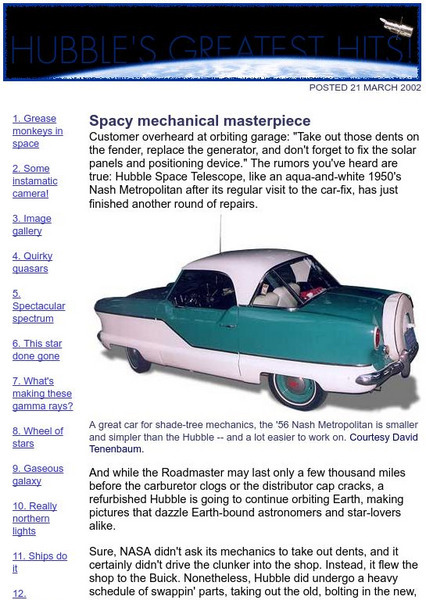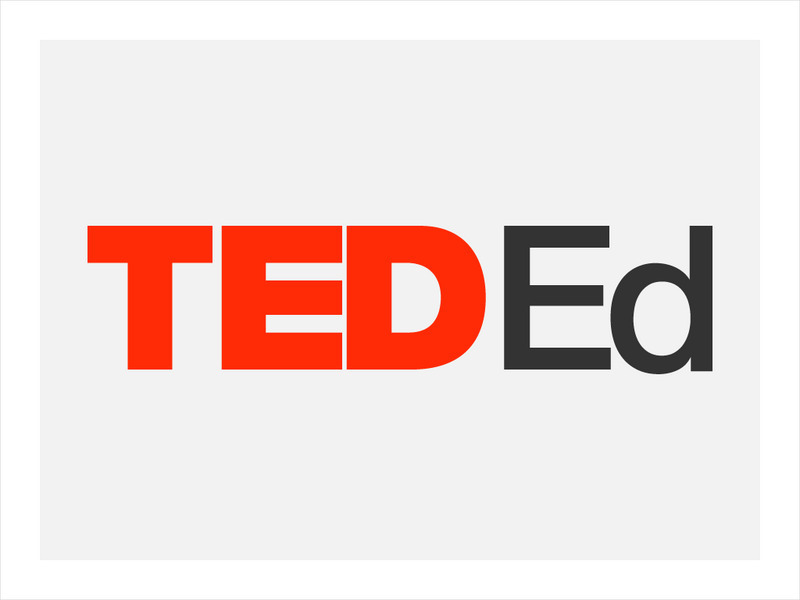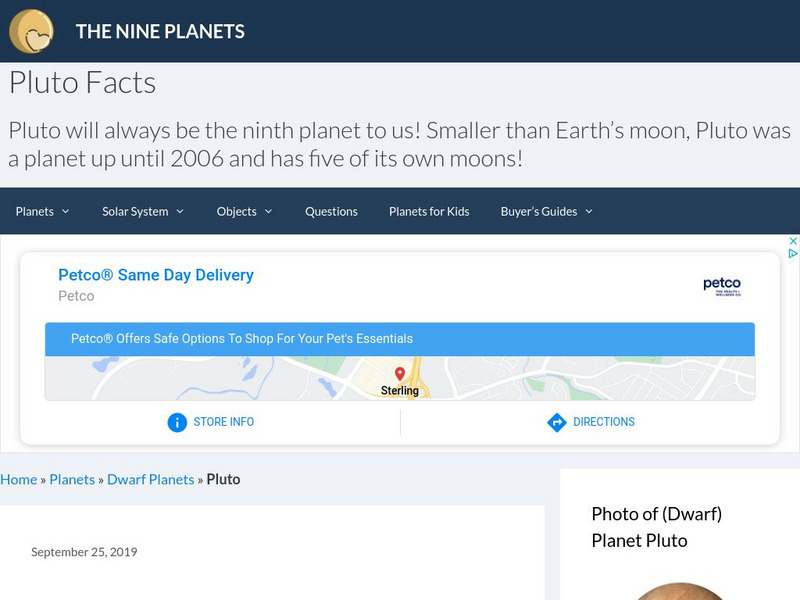NASA
Nasa: James Webb Space Telescope
NASA's web site about the James Webb Space Telescope, which will replace the Hubble telescope and is expected to observe the farthest reaches of the universe.
CK-12 Foundation
Ck 12: Earth Science: Telescopes Study Guide
[Free Registration/Login may be required to access all resource tools.] This study guide summarizes key points about electromagnetic radiation and the different types of telescopes that rely on various forms of it. Includes a few...
NASA
Nasa Star Child: The Space Shuttle (Level 2)
This site has a description of the Space Shuttle and its uses. Included are vocabulary words linked to a glossary of terms, graphics and a printable version.
University of Wisconsin
The Why Files: Terrific Telescopes
Why? File provides insight into four advances in telescope technology as well as shows how they are "improving our harvest of cosmic understanding."
BBC
Bbc: Space Race
There are galaxies far, far away, but just how big is our own solar system? Scroll through this interactive to quickly observe just how much we know and have learned about our solar system.
Space Telescope Science Institute
Amazing Space: Albert Einstein: A Genius, Relatively Speaking
Albert Einstein was one of the most influential scientists in the 20th century. Read about his contributions on the fact filled site from the Space Telescopes Science Institute.
Space Telescope Science Institute
Amazing Space: The Star Witness: Hubble Snaps Orion in Perfect Picture Glory
The Orion Nebula is a birthplace for over 3,000 young stars. This article provides a good explanation of this region and some images taken by the Hubble Telescope. (Published Jan. 2006)
Other
Northrop Grumman Corporation: Into the Unknown: Resources
The Northrop Grumman Corporation provides numerous resource about outer space and beyond.
Space Telescope Science Institute
Amazing Space: Star Light, Star Bright
This online exploration provides an opportunity to identify the different properties of waves and the relationship that exists between energy, wavelength, and frequency. Correlate images from the Hubble Telescope to the wavelength,...
NPR: National Public Radio
Npr: New Observatory Brings Stars Closer to Earth
A radio story describing the development of the newest technology in telescopes based on an old idea. Images of the 80-acre interferometer are shown on the site.
NASA
Nasa: Astronomy Picture of the Day: Jupiter's Great Red Spot
This collage of images by the Hubble Space Telescope captured the changes in Jupiter's Great Red Spot over a period of several years.
University of Wisconsin
The Why Files: Spacy Mechanical Masterpiece
An interesting article describing repairs which were completed on the Hubble telescope in 1993 and 1997. Also contains links to pictures taken by the telescope.
PBS
Pbs Nova: A Conversation With Neil De Grasse Tyson
Nova offers an enlightening conversation with astrophysicist Neil deGrasse Tyson. Topics include origins of the universe, multidisciplinary approaches to science, exciting recent discoveries, his position as director of the Hayden...
TED Talks
Ted: Ted Ed: Nasa & Trappist 1: A Treasure Trove of Planets Found
Seven Earth-sized planets have been observed by NASA's Spitzer Space Telescope around a tiny, nearby, ultra-cool dwarf star called TRAPPIST-1. Three of these planets are firmly in the habitable zone. In this video, NASA Scientists...
TED Talks
Ted: Ted Ed: How Small Are We in the Scale of the Universe?
In 1995, scientists pointed the Hubble Telescope at an area of the sky near the Big Dipper. The location was apparently empty, and the whole endeavor was risky- what, if anything, was going to show up? But what came back was nothing...
Nine Planets
The Nine Planets: Pluto
This site contains copious information about Pluto. The site contains descriptive and statistical information, as well as a detailed article about the search for trans-Plutonian planets and the "Nemesis" hypothesis.
Australian Broadcasting Corporation
Australian Broadcasting Corporation: News in Science: Galaxy Spinning the Wrong Way
From ABC News in Science, this February 2002 article revolves around findings posted by images from the Hubble Space Telescope which suggest a spiral galaxy spinning in an opposite direction than expected.
California Institute of Technology
Spitzer Science Center: Milky Way Aglow With Dust
This space telescope image titled "The Milky Way Center Aglow with Dust" features five separate images of the galaxy's center through infrared eyes. In addition, a detailed textual overview explains various specifics of the picture.
Space Telescope Science Institute
Amazing Science: Solar System Trading Cards
Amazing Science looks at the Solar System with this FAQ site and lesson plan.
Harvard University
Chandra X Ray Observatory: Video Podcasts: The Incredible Two Inch Universe
A set of podcasts outlining a four-step process for understanding the vastness of our universe, from the vicinity of the Earth and Moon, out into distant galaxies. Downloadable instructions and a handout are included, as well as...
